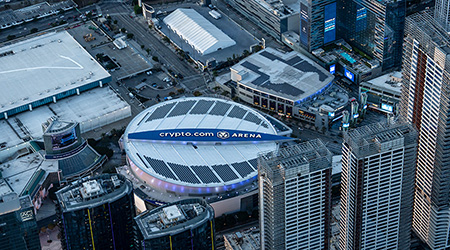SPONSORED
CFFA - Branded Feature
Take a Permanent Vacation from Heat Islands with PVC Roofing
The term “urban heat island” might conjure images of a relaxing tropical getaway, but the truth is far more serious. It describes the phenomenon of cities being markedly warmer than surrounding communities, and the destructive effects inherent to it. Daytime temperatures can average up to 7 degrees hotter in urban settings, with the possibility of isolated spikes of over 22 degrees hotter.
Why? Because the topography of an urban area is covered with man-made structures such as buildings, roads, and other infrastructure that absorb and re-emit the sun’s heat more than natural landscapes such as forests and bodies of water. Urban heat islands cause increased energy consumption, higher emissions of air pollutants and greenhouse gases, as well as compromised human health and comfort.
It’s a problem that is increasing, with the number of recorded days of extreme heat nearly doubling since the 1980s.
Fortunately, according to the Chemical Fabrics and Film Association – Vinyl Roof Division, use of sustainable PVC membrane roofing can help reduce the urban heat island effect and its consequences. A white PVC roof can reflect 80% or more of the sun’s rays and emit at least 70% of the solar radiation a building absorbs. Meanwhile, a dark-colored asphalt or rubber roof only reflects between 6 and 26% of solar radiation, resulting in greater heat transfer to the building interior and greater demand for air conditioning – a strain on both operating costs and the electric power grid.
U.S. EPA has identified cool roofs as a key strategy in mitigating urban heat islands, citing their ability to reduce energy use, air pollution, and greenhouse gas emissions, while improving health and comfort. A cool roof transfers less heat to the building below and can reduce air temperatures inside buildings with and without air conditioning, helping to prevent heat-related illnesses and deaths.
PVC roofing meets the emittance and solar reflectance index criteria for LEED, Green Globes, and California’s Title 24. It is a high-performing, low slope, single-ply roofing solution that has protected and kept buildings cool in climates around the world for decades. Regardless of climate, when the sun beats down, a cool roof will counteract the effects of urban heat islands to keep ambient temperatures low.
In addition to their obvious cooling benefits, the long service life of PVC roofing membranes – combined with recyclability, relatively low use of non-renewable resources, inherent energy efficient characteristics, and suitability for green roof assemblies – make them the sustainable choice among commercial roofing systems.
For more information on PVC roofing, visit https://vinylroofs.org/.








